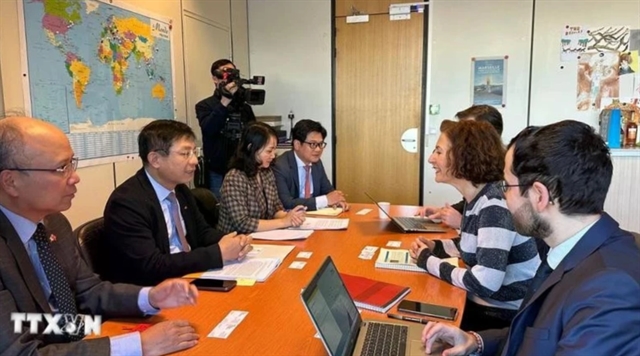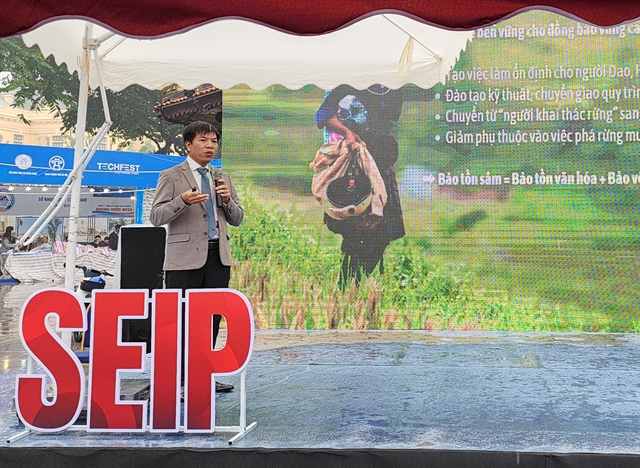 Economy
Economy

 |
| Suối Rao ecolodge in Bà Rịa Vũng Tàu has been recognised as a carbon-neutral tourism destination. VNA/VNS Photo |
The Vietnam News Agency interviews Phạm Ngọc Nhàn, PhD, at Trà Vinh University Department of Economics and Development, about the advantages and expectations for the country's carbon exchange.
Việt Nam is moving toward operating a carbon exchange. As a researcher in this field, how do you think this will impact efforts to reduce emissions and promote sustainable development?
While researching carbon markets in recent years, I’ve observed that carbon markets have appeared and been widely traded around the world, creating great value for the environment.
Therefore, to develop in a green way, we need to focus on the carbon market so that businesses can offset green credits or develop in a way that reduces emissions during production.
Our efforts to develop a carbon market are a very positive signal for Việt Nam in the context of current climate change.
This will encourage and call for businesses to be ready to work together to protect the environment through their production activities.
Environmental concerns might not have been a priority in production activities in the past. However, for sustainable development, businesses have recently also been ready to sacrifice some economic benefits in order to protect the environment, protect the Earth and reduce global warming.
The Ministry of Agriculture and Environment [the merger between the Ministry of Agriculture and Rural Development and the Ministry of Natural Resources and Environment] is coordinating with the Ministry of Finance to actively implement tasks and solutions to pilot the carbon market, ready for it to start officially operating in 2029.
The carbon market is a very good signal and we hope the Government will have solutions to encourage businesses to exchange quotas and credits or develop mechanisms to foster the carbon market.
In particular, on the carbon exchange, there will be suppliers and buyers, contributing to a more dynamic and lively market.
We see that the Ministry of Finance is submitting to the Government a proposal to reduce or exempt taxes on carbon credit transactions when piloted in Việt Nam.
We hope that open policies will soon be in place to encourage businesses to participate and exchange carbon credits to offset their sectors' emissions.
Looking globally, what countries do you think are currently operating carbon exchanges effectively. What are the most important factors that have helped them operate these exchanges successfully?
In Asia China has had a carbon exchange for over 20 years and its market has developed significantly. Japan and South Korea have also been focusing on developing carbon markets.
These countries' governments also focus on policies to develop the carbon market to create conditions for businesses to participate in offsetting their emission activities.
For specific sectors, such as aviation in developed countries, they are applying carbon credit trading to offset their flight emissions. This is something the European Union is interested in, as they already have carbon markets in place to offset emissions from flights entering the EU.
Vietnamese businesses are hopeful that the government will soon have clearer policies and more specific guidance for them to apply.
Initially, we are implementing greenhouse gas inventories. We hope that the government will soon have policies to help make our carbon market as active as possible.
As you mentioned, for a lively carbon market, the most important thing is a transparent policy mechanism. With the merging of the relevant ministries tasked with developing policies for the carbon market, how do you think the policy needs to be adjusted?
At this point, businesses are implementing greenhouse gas inventories and reporting to the local authorities. After the inventory, there will be quotas and emission limits assigned to businesses.
Vietnamese enterprises expect the new ministry to have more detailed policies for each sector, to help these sectors define and implement emission reduction activities, to find out how to carry out inventories and then allocate quotas for each sector and industry. This way, businesses can easily implement and achieve effective results.
How can Việt Nam reduce emissions in rice cultivation?
The former ministry of agriculture had a project for one million hectares of high-quality, low-emission rice fields linked to green growth in the Mekong Delta. These are positive signals.
However, we are still researching how much emission reduction can be achieved and we hope that there will be more specific policies to enhance the value of the Vietnamese brand.
We hope that products will reduce emissions and have a global brand so that the world recognises Việt Nam as a sustainable development country through products that reduce emissions.
It is known that, in addition to your role as a lecturer, you are also in charge of projects related to energy savings and emission reductions at the Sustainable Development Investment Promotion Joint Stock Company. From a business perspective, how is your company approaching the carbon market?
The company has over recent years developed multiple clean energy projects to reduce emissions and create carbon credits.
We are also looking forward to hearing more about the Government’s policies and paying attention to how the carbon market will be developed, as well as how domestic businesses will participate. Only then can we develop projects such as energy-efficient and low-emission stoves.
These green projects cannot be developed by a single enterprise alone. So when developing these the company needs the cooperation of other businesses.
Previously, we only developed projects for large businesses or foreign corporations to invest in which could offset carbon emissions from their production activities. However, at this point, the Government’s policies have encouraged businesses to develop sustainably, go green and focus on the environment or offset carbon emissions from their production activities.
Therefore, for projects like energy-efficient and low-emission stoves, we may slow down to listen and wait for information from businesses so that we can cooperate and develop them more strongly. VNS




